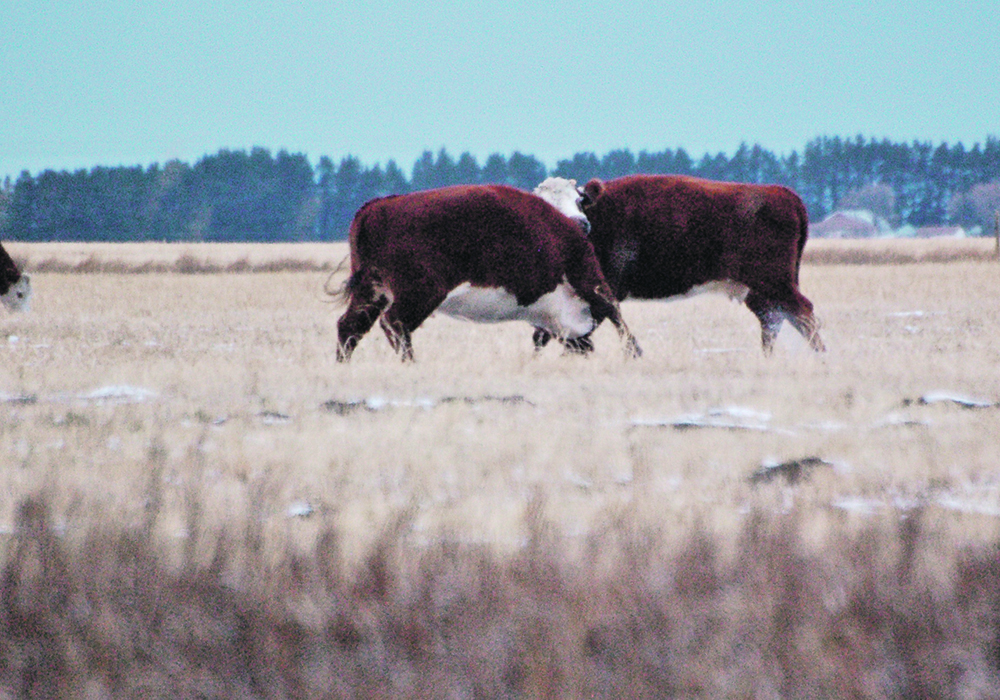Advocacy groups have criticized the study, but researchers hope findings will shed new light on genetic aspects of autism
Australian researchers have discovered a strong association between the genes influencing cattle temperament and autism in humans.
Dr. Roy Costilla, postdoctoral research fellow at the University of Queensland’s Centre for Animal Science, said researchers tested the association of cattle temperament with temperament-like traits in humans, including four behavioural and psychiatric disorders: neuroticism, schizophrenia, developmental delay disorders related to brain or cognition, and autism spectrum disorders (ASD).
“The human trait with the strongest association was ASD.”
The findings don’t mean that cattle have autism. It means cattle share an overlap of genes with humans that are critical to brain functions and fear-response stimuli.
Read Also

Farming Smarter receives financial boost from Alberta government for potato research
Farming Smarter near Lethbridge got a boost to its research equipment, thanks to the Alberta government’s increase in funding for research associations.
“Temperament traits are of high importance across species,” Costilla wrote in the report.
In cattle and other livestock species, temperament traits are of welfare and commercial importance because docile animals can grow faster, are easier to transport and feed, and can have superior meat quality. Reactive animals can endanger the safety of herd members and human handlers.
“From humans to cattle, we found that ASD risk genes in humans are also associated with cattle flight time. Here, the overlap comprised two genes: GABRB3 and CUL3.
“These genes play an important role in synaptic plasticity, the ability to strengthen or weaken communication between neurons over time, which in turn contributes to learning and memory. In other species, these genes have also been related to domestication (dogs and foxes) and anxiety (chickens).”
Costilla said that, as with any trait, temperament is not only a product of genetics, but also of handling and training.
“There has been variable selection against poor temperaments since ancient times and, more recently, variation in training of animals,” he said. “These variations contribute to large variation between and within mobs (herds). This is reflected in almost no animals being a risk during handling in some situations, compared to a very high proportion of animals posing a risk during handling in other herds. The incidence of poor temperament in larger cattle stations, in Australia, where animals are handled less frequently, tends to be more variable.
“But no matter how variable, there is almost universal culling of animals with very excitable temperaments because of safety reasons, though the threshold for good versus poor temperament does vary substantially.”
Temperament is a complex trait. It is generally a function of fear reactions to handling, so most research looked at the magnitude of fear response to a standardized stimulus.
“Flight time became a common objective research measure in Australia because it was easy to do,” he said. “Interestingly, despite having reasonable repeatability and definitely being a measure of fearfulness, it is not a behaviour that changes much with training.”
Flight time is the speed at which cattle move when released from an enclosure. Producers ideally want cattle to move quietly and methodically rather than charging out in a stressed state.
The test involved measuring the flight time taken by an animal to pass 1.7 metres (measured using infrared beams) after being released from a box in which it had been weighed. Poor temperament cattle exited quickly, and quiet cattle exited at a gentle pace, giving them longer flight times.
The heritability of flight time is about 35 percent, which is significant enough to make progress by breeding for better temperament.
“Interestingly in cattle, there is a very specific flight zone around each (animal), which is centred on their shoulders. If an animal has a flight zone of say three metres, a handler can safely work it if she/he keeps beyond three metres. But if the handler enters that three-metre zone, the animal will react violently in a range of ways, one of which can be to attack.”
Cattle handers work cattle by positioning themselves at different points around an animal’s flight zone and moving toward the flight zone to get the cattle to move in the direction they want.
However, Costilla said maternal protective temperament is different. It is a reaction to a person who may threaten the calf. Cows that are normally highly tractable when not lactating can become dangerous after calving.
“There is almost no research on the genetic variation of this trait, but experience (has shown) that more temperamental cattle tend to have greater incidence of fierce maternal protective behaviour.”
The response to the research has been mixed with criticism in social media from autism groups.
“Unfortunately, some people have not read the paper but were very quick to react negatively,” he said. “Our study explored genes affecting behaviour in two mammal species using already existing data and thus has not recruited any new subjects.
“On the other hand, the autism and animal science research community has received the paper very well. We hope our findings will also bring new questions into the genetic aspects of autism.”
He said it is important for cattle producers to have access to a test that enables them to select genetics for temperament in the bulls they buy or breed.
According to the news release, researchers looked at 28 million data points per animal on 9,000 cattle with temperament records in the initial study, then validated the results in more than 80,000 cattle from Ireland.
Going forward, genetic research will continue with a goal to validate markers with other cattle species such as Nellore from Brazil, Brahman cattle from the United States or other beef cattle from Canada.
“We are also looking for new collaborators so it would be great to hear from interested Canadian farmers or researchers,” said Costilla.
“Ultimately, we want to have a standard panel of DNA markers for temperament in chips designed to accurately screen potential breeding cattle for this important trait.”
The research study was published in the journal Genetics Selection Evolution.

















